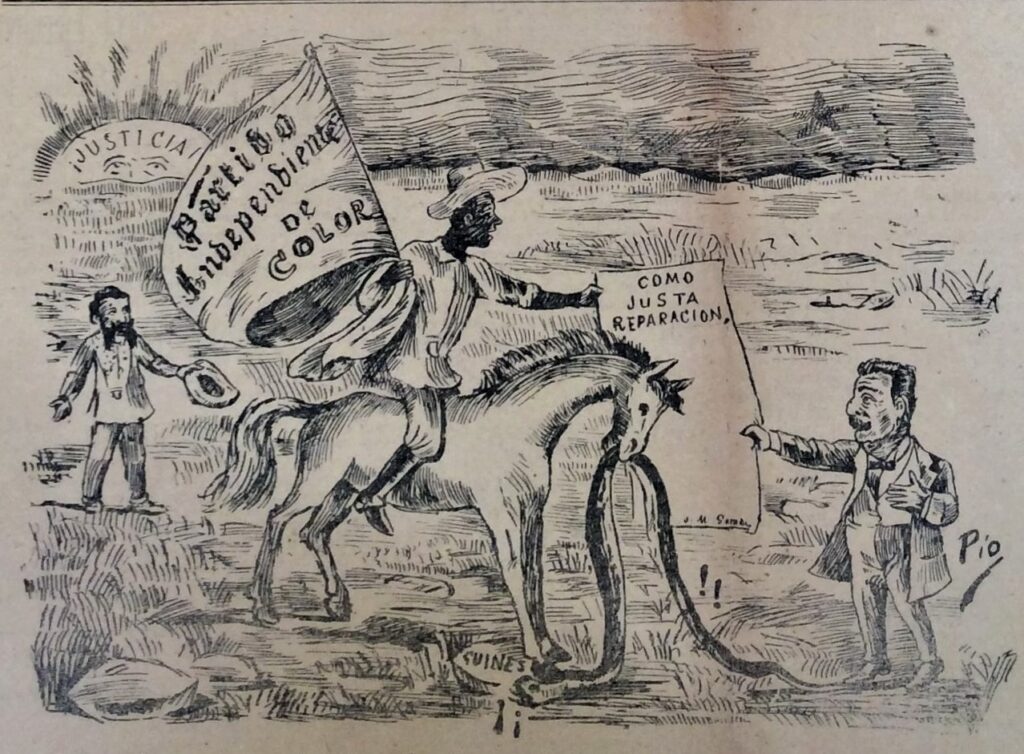The Atlantic slave trade transformed the demographics of the Americas. Between 1500 and the end of the trade in the late 1800s, a little more than ten million Africans were forcibly brought to the Americas. These slaves came from dozens, or even hundreds, of different ethnic groups, cultures, and communities; in the slave societies of the Americas, they restored these heritages, but also remade and blended them in the formation of new identities.
In places of particularly intense plantation slavery, such as most of the Caribbean and Brazil, the majority of the population was of African descent by the 1800s. After slavery was abolished and these places became independent countries, these Afro-descendent populations demanded citizenship and mobilized politically as large and powerful constituencies. In places like Cuba and Brazil, this transformed the sense of national identity away from a Eurocentric one, towards an ideal of “racial democracy.” This ideal was often more a theory than a reality; nonetheless, the ideal gave momentum to the demands of Afro-Brazilians and Afro-Cubans for real equality.

Political cartoon celebrating the Independent Party of Color (PIC) of Cuba. After Cuban independence, the government held the official stance that Cuba was a race-less, or post-racial, nation. However, many Afro-Cubans continued to face discrimination and formed the PIC to advocate for their rights. Despite the government’s anti-racist stance, it violently suppressed the PIC in the 1910s.
In other parts of Latin America, enslaved Africans were never a large part of the regional workforce. The slave trade brought Africans to every Spanish colony, but in many places, like Mexico, Ecuador, Colombia, Peru, and Guatemala, their numbers were few and they were largely confined to specific regions, such as Esmeraldas in Ecuador, the gulf coast of Mexico, and Colombia’s Pacific Ocean shore. When these colonies became independent countries and slavery was abolished (1810-1830), those Afro-descendant populations became small racialized minorities within the national community. Because of both formal and informal restrictions on their movement, and because of their own efforts to stick together in solidarity, these Afro-descendant groups largely remained in well defined regional enclaves. There they developed self-defined traditions and largely lived self-sufficiently, producing their own food, necessities, and conveniences. They were neglected by national governments, which did little to support them; but this also meant they preserved a significant degree of autonomy that they jealously guarded.
In the early 20th century, all of the above countries developed an official mestizo sense of national identity. Political, economic, and technological changes created the conditions for popular classes (working-class people, mixed-race people, and indigenous peoples especially) to become far more involved in the political process than had been permitted in the previous century. As these populations demanded representation — and as politicians attempted to appease these constituencies — the dominant ideas about national identity changed. No longer did political leaders say their nation was based on ideals of European whiteness. Now they said that their nation was an essentially mixed-race nation, a mestizo nation.
But they understood mestizo to mean a blend of Indian and European. This racialized sense of national identity did not include African descent. And it mostly still doesn’t. The readings and sources for this theme illustrate the neglect and hostility these national governments frequently displayed towards Afro-descendant groups, and these groups’ efforts at change and representation.
Sources
As with all of the themes, this one advances in four stages.
Stage 1
Your first source is an example of the virulent racism that animated many governments’ racial policies during the early to mid-20th century.
Stage 2
Stages 3 & 4
These two are very closely related, and so if you have the energy and time, I suggest working with them together.
If not, start with the chapter by Ng’weno.